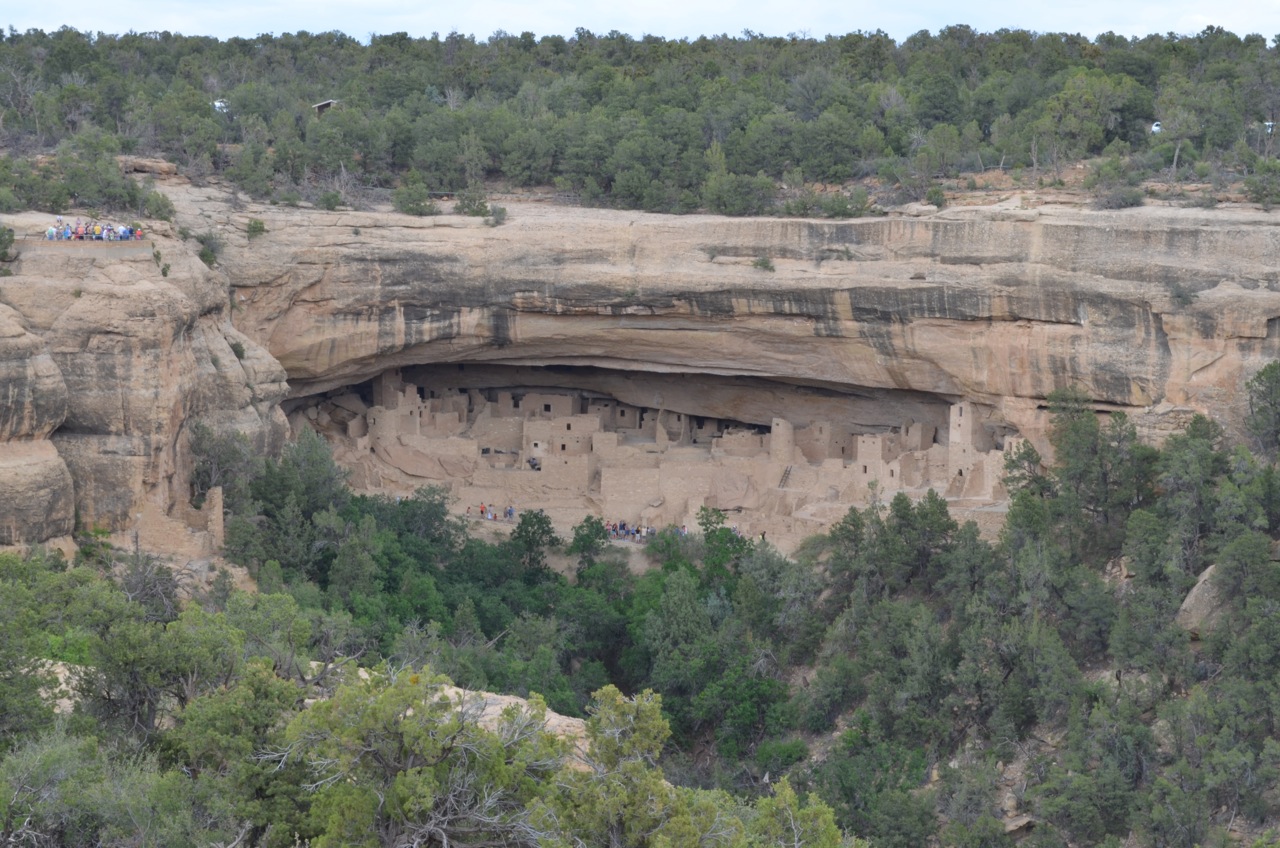
Cliff-top Civilisation
Today was a simpler day—a shorter drive, followed by a guided tour of the cliff dwellings of Mesa Verde National Park. The area was settled by Native Americans between AD 600 and 1250 (as an aside, one of the other people on the tour asked our guide what ‘AD 1250’ meant). Initially they built simple dwellings on the top of the cliffs, but then moved to more permanent buildings made of stone, in the cliff itself.
In the pictures below, you can see the progression in building techniques, from the simple hole, over which would be raised a wooden roof, supported by juniper wood beams, to the more advanced use of stone and ventilation shafts, and eventually an adjacent tower.
Digging these holes was done using sticks and baskets to remove the waste—and the sandstone was shaped and cut using tools made from harder stones found in the river bed nearly seven miles away. Some archeologists made a kiva using traditional tools, and it took over 3000 strokes with a stone axe to chop down the exceptionally hard juniper trees. This meant the Pueblo upgraded existing sites with new structures, reusing wood and stone, rather than building entirely new dwellings.
In the early 1200s the Pueblo people moved into stone structures built into the hollows in the cliff-face created by sandstone erosion. These spectacular ledges were accessible only by hand- and foot-holds carved into the cliff-face. The location, while seemingly bizarre to us, meant they were closer to their main water supply. Because sandstone is porous, rain water is absorbed into it, and forms pools where the sandstone meets non-porous rock. This is also where the large caverns are created, as over time chunks of sandstone break away, caused by the freezing and thawing of the pooled water. So, building in the caverns in the cliff-face meant much easier access to water.
The tour took us around the rim of the canyon, before we climbed down (not using the Pueblo hand- and foot-holds.. but ladders and stairs!) and took a look first-hand at the buildings.
The Pueblo people only stayed another hundred years after move from the rim to the cliff-face, most likely because their natural resources were running out. From the remains of their food, we can tell they stopped eating large game, and turned to smaller rodents and birds instead by the end. So they moved south, and now twenty-one modern tribes claim ancestry from the Pueblo.
All-in-all, it was a very interesting tour, and thankfully a little bit overcast so the famed 40C+ temperatures in Cliff-top Palace weren’t to be. Mesa Verde National Park itself has been ravaged by fire over the last fifteen years—nearly two-thirds of it has been destroyed in that time. Scenes like this are common across the park:
Now it’s time to find my campsite, put up my tent, make sure I don’t light a campfire, and attempt some sleep before heading to the next place tomorrow!
Oh, and I had a pizza and finished it tonight. I’m not sure it counts though because a) it wasn’t greasy, and b) it was about six inches in diameter. Tasty though!
